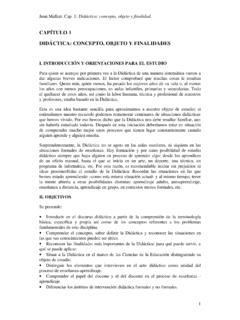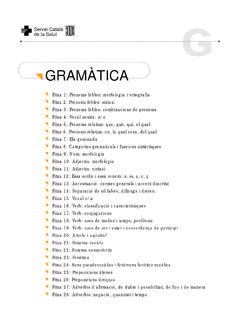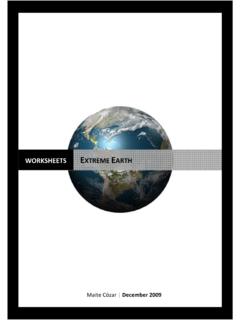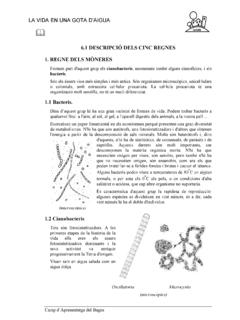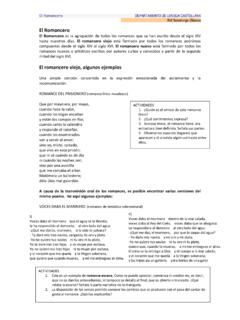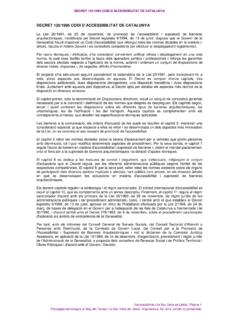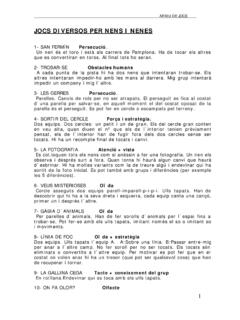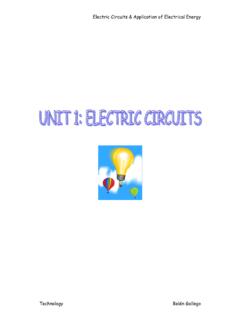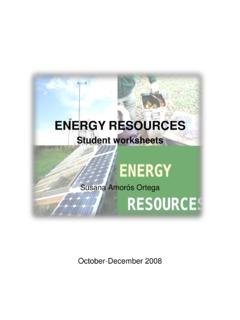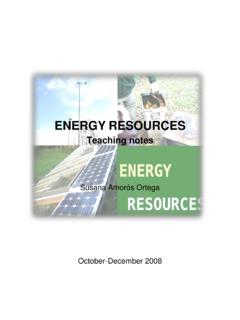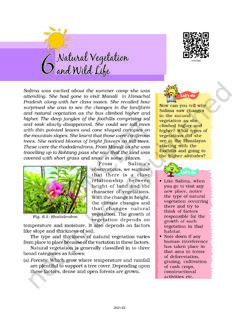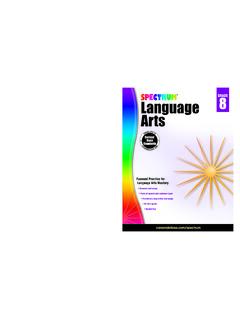Transcription of ANIMAL WORLD: TYPES AND HABITATS
1 ANIMAL world : TYPES AND HABITATS B rbara Perolada Octubre-Desembre 2009 ANIMAL world : TYPES AND HABITATS B rbara Perolada Escola Carles III Name: _____ Date: _____ Worksheet 1 Complete this Venn Diagram. Put the sentences into the box below. Write the differences between plants and animals: _____ _____ They grow. They can move from one place to another. They can not move. They eat. They use the sunlight to make their food. They have roots in the ground. They reproduce. They die. They eat. They eat other living things. They are born.
2 ANIMAL world : TYPES AND HABITATS B rbara Perolada Escola Carles III Name: _____ Date: _____ Worksheet 2 1. Fill in the gaps: _____ are animals with backbone. Invertebrates are animals _____. 2. Complete the mind map: INVERTEBRATES ANIMAL world : TYPES AND HABITATS B rbara Perolada Escola Carles III Name: _____ Date: _____ Worksheet 3 ANIMAL Passport Appearance.
3 What is the body like? habitat . Where does it live? How does it live? How does it move? LANGUAGE SUPPORT Appearance: It s ../ It s hasn t habitat : It It s How does it live?: It can Name: Group it belongs to: It belongs to the _____ group. aquatic terrestrial ANIMAL world : TYPES AND HABITATS B rbara Perolada Escola Carles III Name: _____ Date: _____ Worksheet 4 1. Complete this table by tickling the correct boxes. They change their appearance. They have a head, a trunk and limbs. They have a tail. They have scales. They have feathers.
4 They have fur or hair. They breathe through gills. They breathe through lungs. They lay eggs. They give birth to live young. 2. Create your own vertebrate and describe it. LANGUAGE SUPPORT This is s a .. It s got/It hasn t It lives .. It can ../ It can t .. Amphibians Fish Reptiles Mammals Bi rds breathe lay give birth ANIMAL world : TYPES AND HABITATS B rbara Perolada Escola Carles III Name: _____ Date: _____ Worksheet 5 Learn a little bit more about vertebrates!!! habitat SIZE INTERESTING FACT DIET APPEARANCE PHOTO ANIMAL world : TYPES AND HABITATS B rbara Perolada Escola Carles III Name: _____ Date: _____ Worksheet 6 1.
5 What do you do to cope with different situations? What do aquatic birds do? I / Aquatic birds use look for have send make produce take .. to protect ..to make a bed..to pick up small objects..to deal with the dark.. to greet friends. to protect you from the rain to deal with the dark to greet friends to make a bed to pick up small objects to protect you from the sun to protect you from the cold the rain the sun the cold me them from ANIMAL world : TYPES AND HABITATS B rbara Perolada Escola Carles III Name: _____ Date: _____ Worksheet 7 1.
6 Complete this diagram with the words in the box below: 2. Who is the diver and who is the dabbler in the aquatic bird s world ? I ve got a rounded shape, so I m a _____. I ve got my legs _____ the body, so I m a diver. I feed (eat) on the surface, so I m a _____. I ve got a _____ tail, so I am a dabbler. I ve got an elongated body, so I m a _____. I feed _____ so I m a diver. I ve got a sloping down tail, so I am a _____. I ve got my legs back on the body, so I m a _____. I m a diver I m a dabbler feeds at the bottom. rounded body sloping down tail raised tail legs centrally under the body elongated body feeds on the surface legs back on the body ANIMAL world : TYPES AND HABITATS B rbara Perolada Escola Carles III Name: _____ Date: _____ Worksheet 8 1.
7 What sort of food can aquatic birds get according to the way they move? Work in pairs and make up a menu taking into account these facts: Potamogeton Species floats on the surface of water Water fleas swim under the water Crayfish stays on the surface Gammarus swim under water Carps swim under water Freshwater snails go along the bottom Non-biting midges hide at the bottom Water lentils float on the surface Frogs stay on the surface Potamogeton species grow at the bottom Water rats swim on the surface Viperine snakes swim on the surface A B Let s take the .. What as a Why don t we as Yes, ok!! No, let s take What Why don t we ANIMAL world : TYPES AND HABITATS B rbara Perolada Escola Carles III Name: _____ Date: _____ Worksheet 9 STARTERS MAIN COURSE DESSERTS Thank you for coming!
8 !! ANIMAL world : TYPES AND HABITATS B rbara Perolada Escola Carles III Name: _____ Date: _____ Worksheet 10 AT THE RESTAURANT (Role-play) W: Good morning AB1: Good morning W: Can I help you? AB2: Yes, please. Can I have the menu, please? W: Here you are. AB1: Thank you. W: What s for lunch? dinner? AB2: Can I have .. as a starter main course please? dessert AB1: Can I have .. for me, please? W: Enjoy your meal! AB1&2: Thank you!
9 AB1: Can we have the bill, please? W: Here you are. Thank you for coming AB1&2: Very nice, thank you, bye!!! W: Bye! ANIMAL world : TYPES AND HABITATS B rbara Perolada Escola Carles III Name: _____ Date:_____ Worksheet 11 1. What do you think aquatic birds feet look like? Draw and answer the questions. 2. After learning about feet, draw and describe the different TYPES of feet and label the parts. 1. They are _____. They have got _____. Aquatic birds can_____with them. 2. _____ 3. _____ 4. _____ Are they big, small, wide, narrow? _____ How many toes have they got?
10 _____ What can they do with them? _____ 1 4 3 2 ANIMAL world : TYPES AND HABITATS B rbara Perolada Escola Carles III Name: _____ Date:_____ Worksheet 12 Let s investigate!! What do we want to find out? _____ What do we need? ANIMAL world : TYPES AND HABITATS B rbara Perolada Escola Carles III What do we do?
